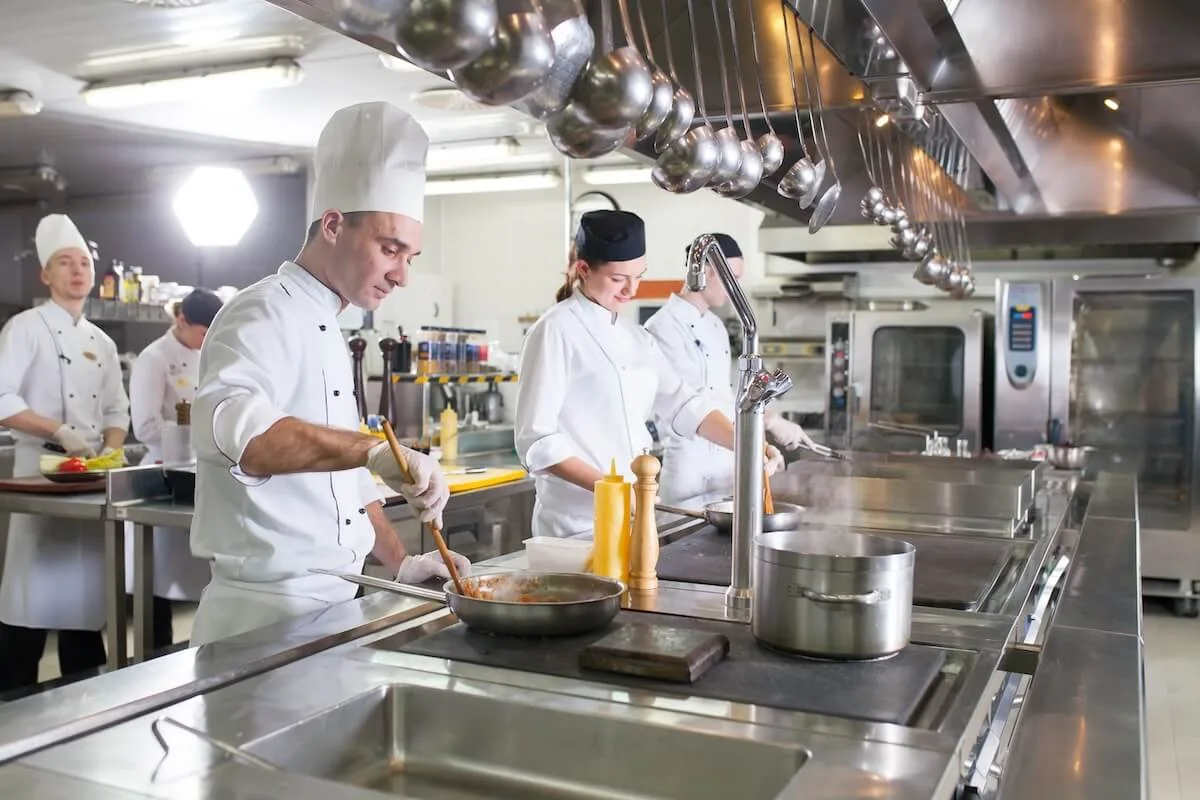Costs down, profits up: Restaurant budget tips for 2025
Skip the article and turn takeaways into action by scheduling a call with our team.
Budget planning is non-negotiable for a successful restaurant. Poor cost management is the downfall of many new restaurants—things can get out of hand when they’re run fast and loose. So, nailing your restaurant’s budget is a key part of being a restaurant owner, and a process that must be continually refined over time.
There are a million moving parts in daily restaurant operations: Each ingredient that goes into a dish, every hour your staff works, and every service you provide impacts your bottom line. Understanding and controlling those costs as well as fixed costs like rent, insurance, and other expenditures is the key to profit, survival, and thriving.
Whether you’re a new business owner or a seasoned operator looking to tighten up your finances, implementing a detailed restaurant budget is your path to success.
Understanding a restaurant’s prime cost

A restaurant’s prime cost represents the cornerstone of a restaurant business’s financial health. It’s made up of the two most controllable expenses in your operation: your labor costs and your cost of goods sold (COGS). Because prime costs are controllable, restaurant owners will find that the greatest chance of making a friendlier budget lies within.
Prime cost includes:
- Food and beverage inventory
- Packaging materials
- Employee wages and salaries
- Payroll taxes and employee benefits
- Workers’ compensation
- Health insurance
Prime costs directly impact your profit margins across all menu items. If a $10 sandwich has a prime cost of $7 (including labor + COGS), then reducing the prime cost through budget management will net you more profit without changing the item’s price.
Generally speaking, restaurants will want to keep their prime cost around 60% of total revenue. Fine-dining and full-service restaurants may trend a bit higher due to higher labor costs, while fast food restaurants will often fall a bit lower.
That 60% prime cost is often fairly evenly split between labor (at around 30% revenue) and COGS (often around 30% of revenue). Let’s look at ways to make the most out of both.
Budgeting for labor costs
Calculating your labor cost is a fairly simple formula. Choose a time period (month, quarter, year), gather labor cost data (wages, benefits, taxes, etc.), and determine your revenue over that period. Then apply this formula:
Labor cost percentage = (total labor costs / total revenue) x 100
If you notice that you’re significantly over 30%, you’re probably overstaffed and need to cut costs. If you fall too far below 30%, however, you may experience service quality issues.
To improve your labor cost rate, incorporate:
- Efficient scheduling based on forecast models
- Cross-training employees to be able to swap roles when necessary
- Technology solutions like self-check-in kiosks, restaurant management software, employee scheduling software, and a kitchen display system
Bear in mind that employee retention can keep labor costs down significantly, as hiring and training new staff can be costly. If minimum wage isn’t enough to retain talented staff in your area, consider wage hikes. Talented, high-performing staff members are invaluable to a restaurant’s success—it’s best to keep them happy.
Budgeting for COGS
Keeping a tight watch on your food costs and COGS is one of the key balancing acts in the restaurant industry. Fortunately, restaurant owners can find ways to control costs without sacrificing quality or raising menu prices.
To understand your COGS, use this formula over a given period of time:
Beginning inventory + purchases – ending inventory = COGS
If you’re well above 30%, you’ll want to find ways to reduce costs. If you’re under 30% and your food quality is still good, then you’re doing great.
Ways to improve your COGS budget include:
- Adopting inventory management software and standardized practices (track everything!)
- Practice menu engineering to optimize your menu for profitability
- Adjust portion sizes and ingredients as needed, e.g., changing to seasonal ingredients to navigate price fluctuations
- Negotiate with suppliers to get better deals, either by shopping around or buying in bulk
Simply starting with solid inventory management practices like the first-in, first-out (FIFO) method can reduce food waste, which spikes COGS with no benefit at all.
Practicing sales forecasting

When you’re building a budget, you’ll need to know what kind of numbers you’re working with. After all, predicting a restaurant’s expenses relies necessarily on restaurant sales. Luckily, there’s accounting software, point of sale (POS) systems, and modern restaurant management systems that all combine to help paint an accurate portrait of the future. On that foundation, you can determine your specific restaurant needs.
Even if you’re running a new restaurant, you’ll want to practice sales forecasting to know what future sales to anticipate.
When building a sales forecasting model, try these steps:
- Gather historical data to identify any spikes or dips in sales
- Consider external factors (weather, holidays, tax season, sports seasons) to see why these fluctuations occur
- Analyze past marketing efforts: Can you notice when social media marketing campaigns, for example, led to a significant spike in sales?
- Get specific in numbers: How many customers can you expect to serve in a given day/week/month, and what average spend per turn can you expect?
Accurate sales forecasting has a number of benefits to a restaurant budget. Overall, it shows you trends that impact your inventory needs and staffing needs, giving a clear picture of necessary monthly expenses to avoid overspending. It also shows you where your marketing budget made an impact in the past, and where you can expect it to do so in the future.
Making the most of your marketing budget

In an increasingly competitive environment, many restaurants are turning to marketing—especially social media marketing—to get more eyeballs and hungry mouths. And while free clout from an odd viral post here or there can be invaluable, paid marketing remains a vital tool for restaurants.
Tracking the return on investment (ROI) can be tricky with marketing schemes, as there are a lot of moving parts. For reference, a good ROI on a marketing campaign is around 5:1, though anywhere north of 2:1 is at least a start. POS systems and restaurant management systems can help you separate new from returning customers as a simple metric to begin with.
There are many types of restaurant marketing software, including:
- SEO marketing
- Email marketing
- SMS marketing
- Online review platforms
- Social media marketing tools
- Loyalty programs
All of these can be a financial and time investment, but done right, they’ll lead to more customers. Keep a close watch on your spend on each tool/platform you use and determine which has the biggest ROI.
Tracking fixed costs and semi-variable costs
Any restaurant is going to have fixed costs, and there’s often not much you can control in them. While choosing a location with reasonable costs is important (and a significant part of your budget) once the cost is locked in there’s not much you can do about it. The same can be said for other fixed costs like insurance—it is what it is.
However, lowering semi-variable costs like utilities can increase a restaurant’s profit. Using energy-efficient equipment can keep those costs down—eliminating a few hundred dollars a month in utilities can add up over time.
Lowering costs with tax deductions
Speaking of equipment, there’s good news for restaurateurs: Many restaurant costs are tax-deductible. Here is a brief run-down of essential tax deductions for restaurants (which cut down total costs):
- Labor costs
- Operating costs (rent, utilities, office supplies)
- Advertising costs
- Food costs
- Employee meals
- Transportation costs
- Asset purchases and depreciation (equipment, furniture) and improvements like renovations
- Repairs and maintenance
- Charitable donations
- Insurance and professional fees like accounting or lawyer fees
Keep an eye on changes to the tax code, as these changes can occur swiftly.
Using tech to build your budget template

Restaurant management software and POS systems can help you reach your financial goals. Building a roadmap for your operating expenses and adjusting real-time decisions accordingly will help keep your restaurant financially healthy and profitable.
Restaurant accounting has become much easier in recent years due to systems that aggregate sales data and help you make accurate decisions. Rather than grunting away over a pile of papers, the data now shows up in one place, easily understandable and parsed.
Yelp Guest Manager has helped many restaurateurs improve their budgeting strategies while increasing cash flow. From automated reservations to fully customizable floor plans and tons of data to work with, it pulls a lot of weight. Imagine keeping your restaurant full with no cover fees. Sound nice?
If you want to see all the tricks Guest Manager has up its sleeve, reach out to us for a free demo. Filling your tables has never been easier with the largest consumer network in the U.S.*
*Comscore Media Metrix®, based on Yelp Guest Manager and Reserve with Google collective monthly average number of visitors in the U.S. 2022 when compared to other Google Reserve integrations.